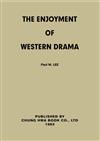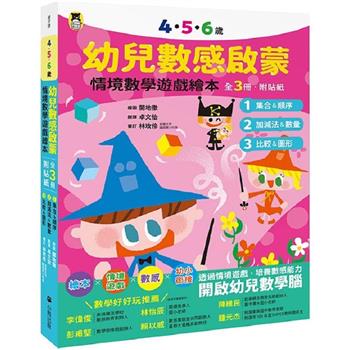Chapter 1
THE PURPOSE AND AIM OF DRAMA
OF ALL THE ARTS, the drama is the closest to the people. No other art depends so much on the human element. The fullest enjoyment of a play comes from seeing it acted by a group of actors performing for another group, the audience. Every performance of a play is therefore different from every other performance, inasmuch as the actors never quite repeat themselves, and the audience are continually changing. A single individual may, in solitude, rad a play with pleasure and profit, and many plays are perhaps best enjoyed in this way; but the communal feeling between audience and actors is unquestionably one of the main reasons why the drama has always been popular.
The instinct for drama is universal in man. Children are born actors, and nothing delights them more than to play at pretending to be what they are not—their elders, their playmates, characters they have read or heard about in stories, or seen on television, even animals and supernatural beings. There “play at pretending,” to the great delight of themselves and their audience, is the root of all drama.
When primitive man came home to his family, after several days’ absence, bearing a slain animal on his shoulders, and told the story of his adventure, he revealed ability as a narrator or perhaps even as a minstrel or a hard; when he acted out for the edification of his family and friends, as it is not unreasonable to suppose that he might have done, he presented possibly the first drama. It is easy to imagine his actors, first as himself self, a talking his prey, then as the hunted animal at length brought down after a struggle, and finally as himself again, standing victorious over the body, beating his chest triumphantly with his fists to proclaim his own invincibility and the superiority of man over beast.
| FindBook |
有 4 項符合
The Enjoyment of Western Drama的圖書 |
 |
The Enjoyment of Western Drama 作者:PAUL M. LEE(李慕白) 出版社:台灣中華書局股份有限公司 出版日期:2023-08-30 語言:繁體書 |
| 圖書館借閱 |
| 國家圖書館 | 全國圖書書目資訊網 | 國立公共資訊圖書館 | 電子書服務平台 | MetaCat 跨館整合查詢 |
| 臺北市立圖書館 | 新北市立圖書館 | 基隆市公共圖書館 | 桃園市立圖書館 | 新竹縣公共圖書館 |
| 苗栗縣立圖書館 | 臺中市立圖書館 | 彰化縣公共圖書館 | 南投縣文化局 | 雲林縣公共圖書館 |
| 嘉義縣圖書館 | 臺南市立圖書館 | 高雄市立圖書館 | 屏東縣公共圖書館 | 宜蘭縣公共圖書館 |
| 花蓮縣文化局 | 臺東縣文化處 |
|
|
圖書介紹 - 資料來源:TAAZE 讀冊生活 評分:
圖書名稱:The Enjoyment of Western Drama
本書由英文撰寫,主題是探討如何深度欣賞戲劇,是戲劇理論書也同時是與英語教材。內容由一部戲誕生的目的談起,接續展現劇本結構、悲劇、喜劇、嚴肅劇、文學性、戲劇元素等,最後提出如何評判一齣劇的看法。作者認為,戲劇不僅僅是劇院裡的演出,也不只是一頁紙上的文字;它既不是劇作家的個人陳述,也不是產生它的文化的線索,每一位閱聽者都可以按自己的感受與節奏對戲劇的意義、結構和象徵性進行分析,以充分享受它帶來的樂趣。
商品特色
1.探討如何深度欣賞一齣戲劇。
2.作者認為閱聽者可以按自己的感受分析一齣劇的意義,以充分享受它帶來的樂趣。
3.全書由英文撰寫,可同時作為戲劇與英語教材。
章節試閱
Chapter 1
THE PURPOSE AND AIM OF DRAMA
OF ALL THE ARTS, the drama is the closest to the people. No other art depends so much on the human element. The fullest enjoyment of a play comes from seeing it acted by a group of actors performing for another group, the audience. Every performance of a play is therefore different from every other performance, inasmuch as the actors never quite repeat themselves, and the audience are continually changing. A single individual may, in solitude, rad a play ...
THE PURPOSE AND AIM OF DRAMA
OF ALL THE ARTS, the drama is the closest to the people. No other art depends so much on the human element. The fullest enjoyment of a play comes from seeing it acted by a group of actors performing for another group, the audience. Every performance of a play is therefore different from every other performance, inasmuch as the actors never quite repeat themselves, and the audience are continually changing. A single individual may, in solitude, rad a play ...
顯示全部內容
作者序
PREFACE
Reading a play well is often more difficult than seeing it well performed. In order to experience the full impact of a playwright’s work, a reader must himself visualize and create all its dimensions. In a theatrical production the burden of interpretation is largely carried, with greater or lesser skill, by the director, actors and designers. Through speech, movement, gesture, rhythm, scenery, costume and lighting, the meaning and emotion of the play are communicated to the audience. ...
Reading a play well is often more difficult than seeing it well performed. In order to experience the full impact of a playwright’s work, a reader must himself visualize and create all its dimensions. In a theatrical production the burden of interpretation is largely carried, with greater or lesser skill, by the director, actors and designers. Through speech, movement, gesture, rhythm, scenery, costume and lighting, the meaning and emotion of the play are communicated to the audience. ...
顯示全部內容
目錄
Preface
1. The Purpose and Aim of Drama
2. What is a Play?
3. Conflict: The Essence of Drama
4. The Structure of a Play
5. Tragedy
6. Comedy
7. Serious-Drama, Comedy-Drama, and Other Types
8. Literary Movements and Reality in Drama
9. Elements of Drama
10. How to Judge a Play
Bibliography
1. The Purpose and Aim of Drama
2. What is a Play?
3. Conflict: The Essence of Drama
4. The Structure of a Play
5. Tragedy
6. Comedy
7. Serious-Drama, Comedy-Drama, and Other Types
8. Literary Movements and Reality in Drama
9. Elements of Drama
10. How to Judge a Play
Bibliography
顯示全部內容
走進宋畫,10-13世紀的中國文藝復興(南宋篇):在江南煙雨微茫中若隱若現,越過唐人直奔魏晉的宋人美學
I NEED ART:關於我,Henn Kim的成年記述
傳承與開創,從臺灣到亞太—亞洲作曲家聯盟口述史訪談集(國際版)
神聖黑色的魔力:徹底改變人類文明、藝術、歷史的黑色故事
說故事的古典音樂導聆【古典樂派】:鋼琴家帶你入門200首名曲,聽懂巴哈到貝多芬的光明與黑暗
人像繪畫聖經:從不像畫到像,再打破框架!幫你練好基礎、開創風格的人像技法全書 ( 素描 / 插畫 / 電繪全適用)
現代藝術的拓路人:塞尚
韓秀帶你認識西洋藝術家(卡拉瓦喬、埃爾‧格雷考、杜勒、李奧納多‧達‧文西、林布蘭、塞尚)
走進宋畫,10-13世紀的中國文藝復興(北宋篇):建立在皇家畫院以外,由士人畫以至於文人畫擔待起來的北宋繪畫藝術
一出手就是名場面:從《樂來越愛你》到《寄生上流》,11大類型片背後的影像拍攝密技&布局手法
I NEED ART:關於我,Henn Kim的成年記述
傳承與開創,從臺灣到亞太—亞洲作曲家聯盟口述史訪談集(國際版)
神聖黑色的魔力:徹底改變人類文明、藝術、歷史的黑色故事
說故事的古典音樂導聆【古典樂派】:鋼琴家帶你入門200首名曲,聽懂巴哈到貝多芬的光明與黑暗
人像繪畫聖經:從不像畫到像,再打破框架!幫你練好基礎、開創風格的人像技法全書 ( 素描 / 插畫 / 電繪全適用)
現代藝術的拓路人:塞尚
韓秀帶你認識西洋藝術家(卡拉瓦喬、埃爾‧格雷考、杜勒、李奧納多‧達‧文西、林布蘭、塞尚)
走進宋畫,10-13世紀的中國文藝復興(北宋篇):建立在皇家畫院以外,由士人畫以至於文人畫擔待起來的北宋繪畫藝術
一出手就是名場面:從《樂來越愛你》到《寄生上流》,11大類型片背後的影像拍攝密技&布局手法
|










